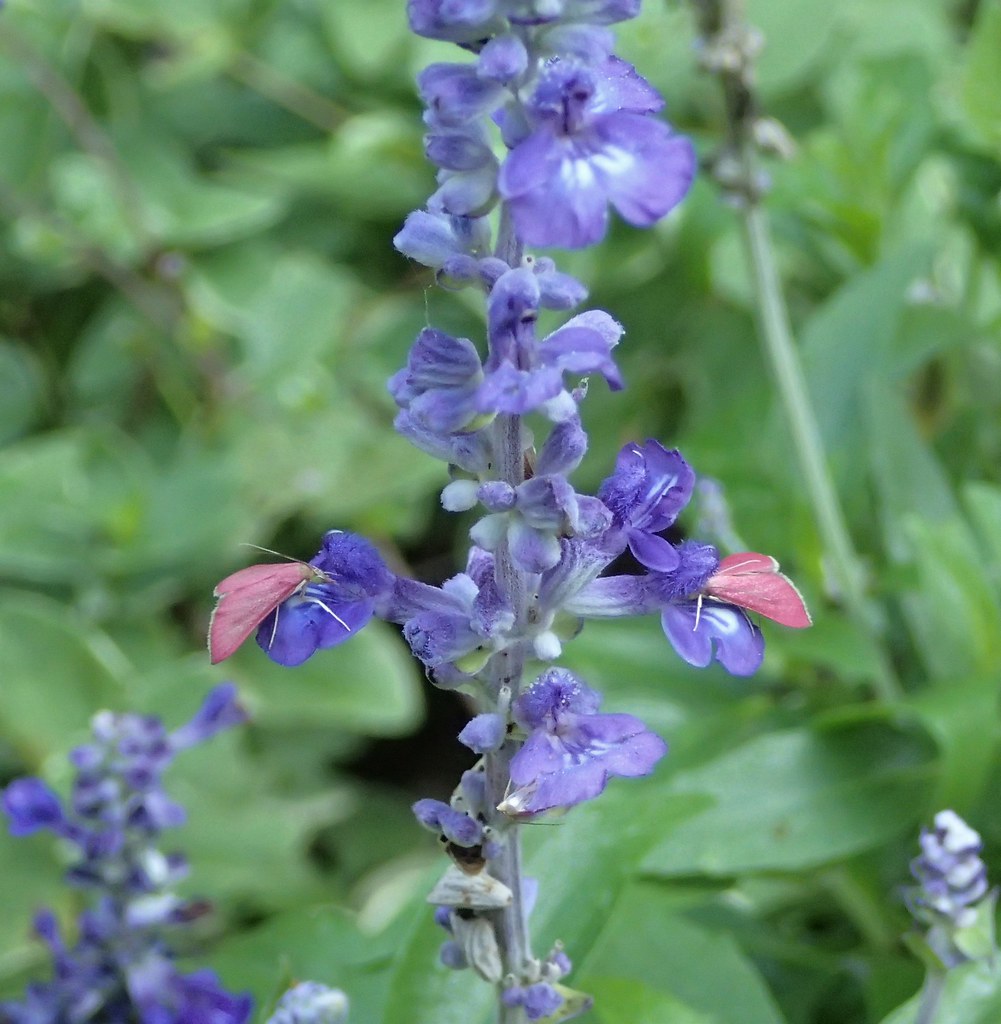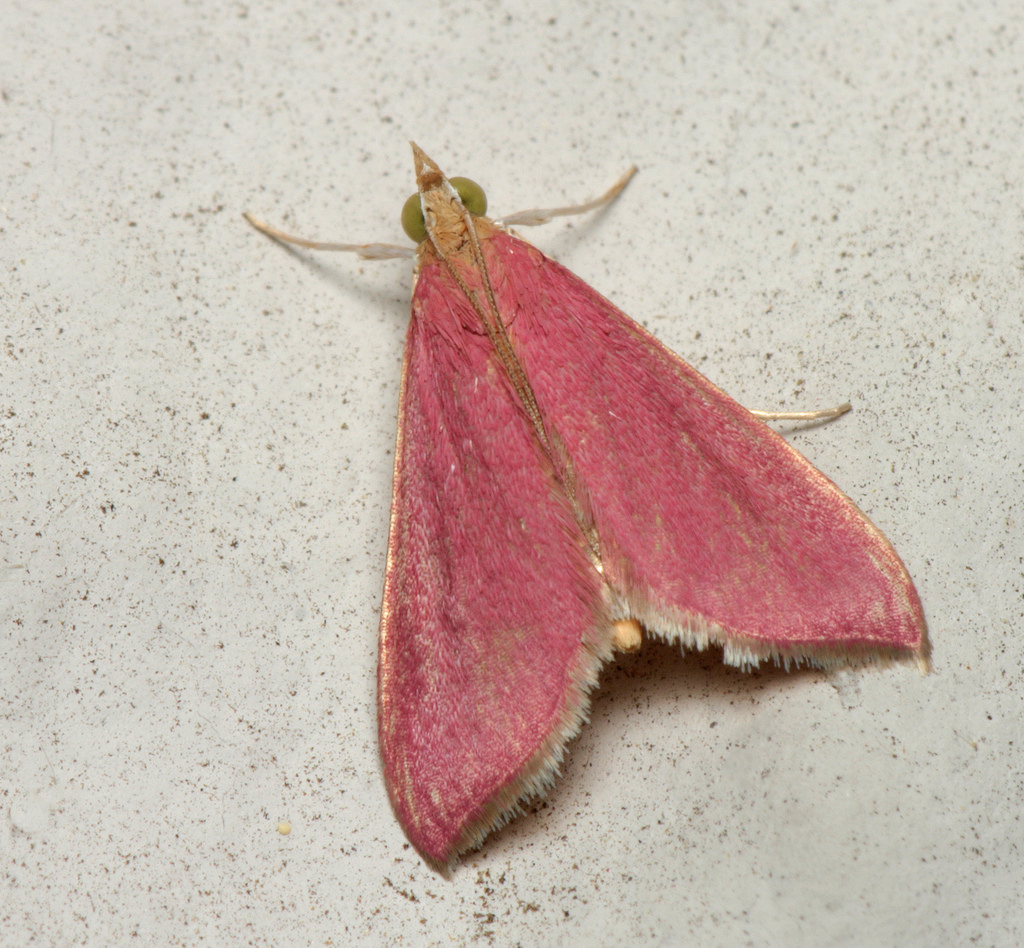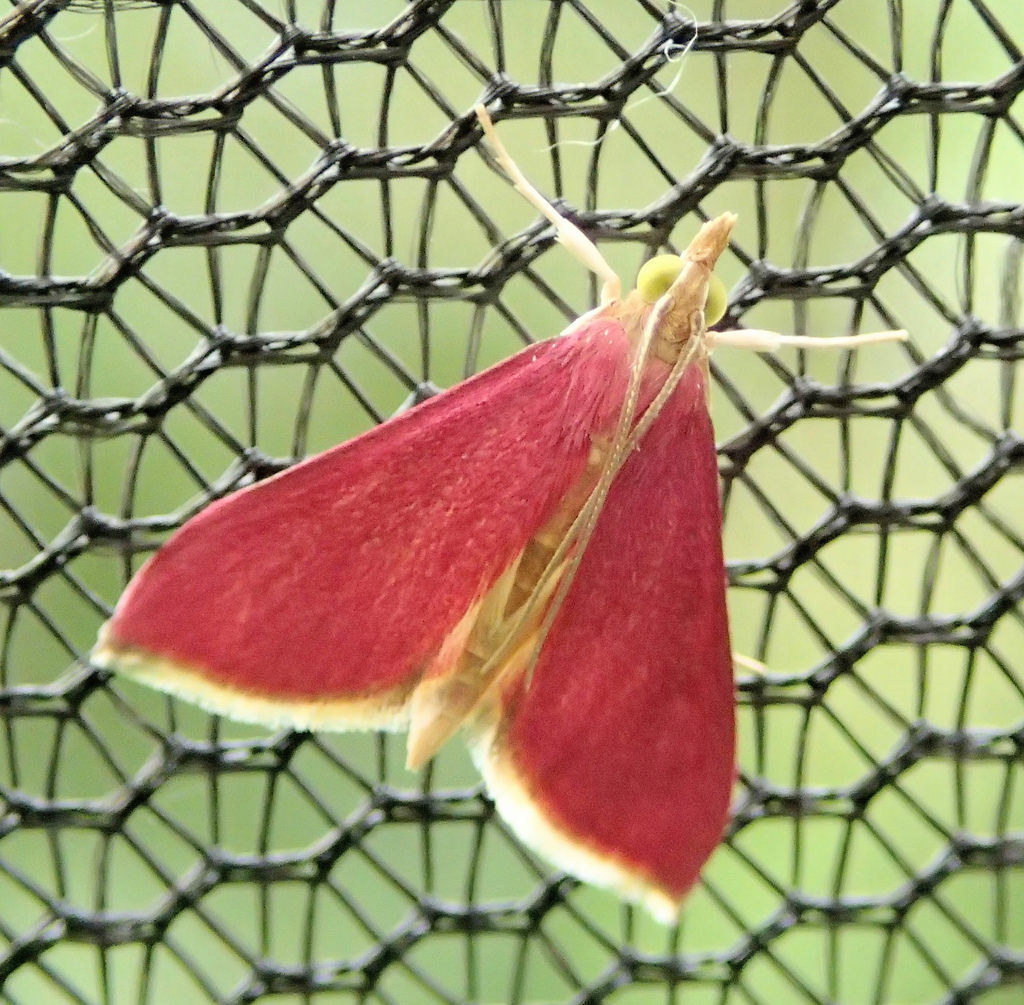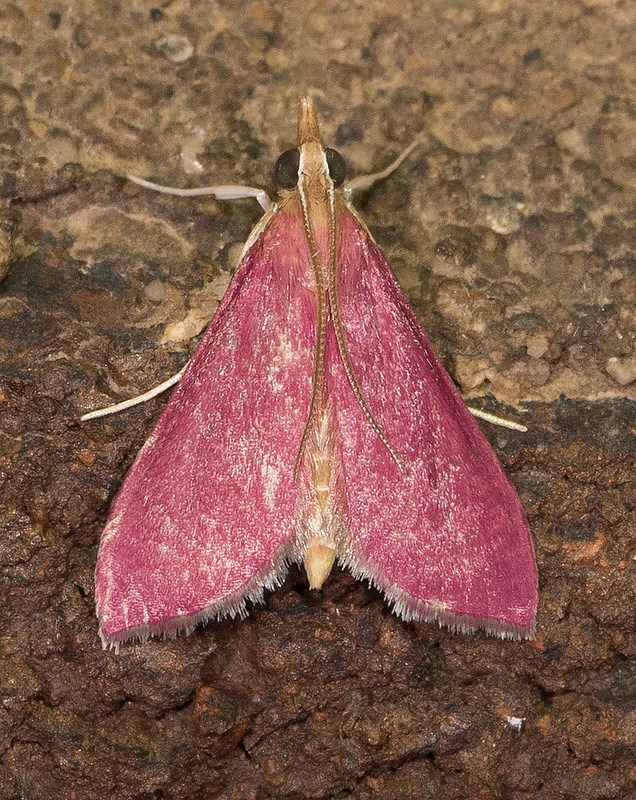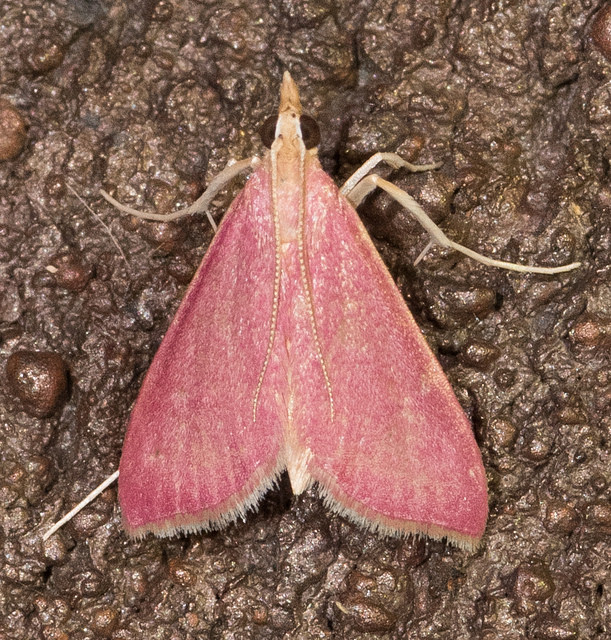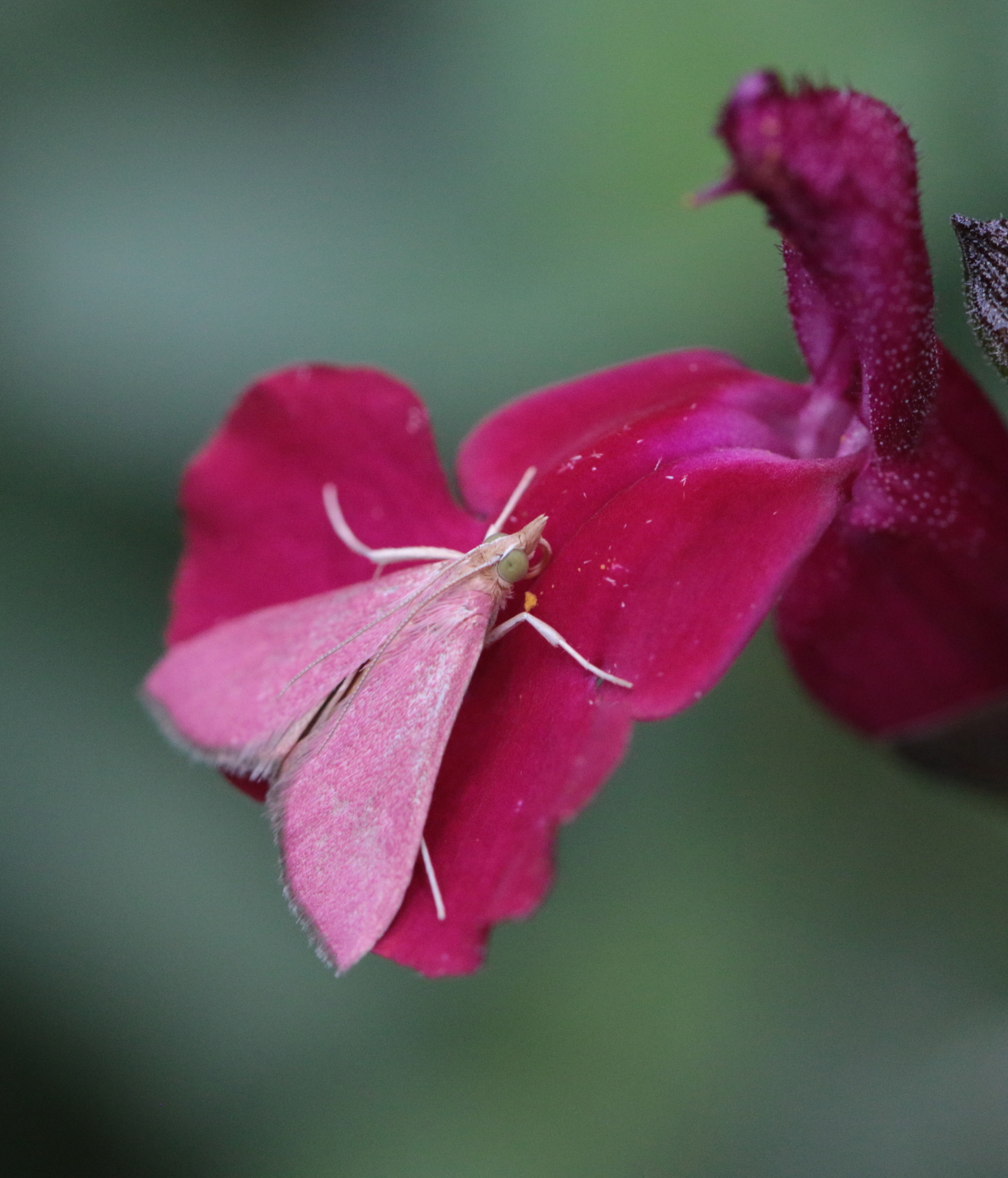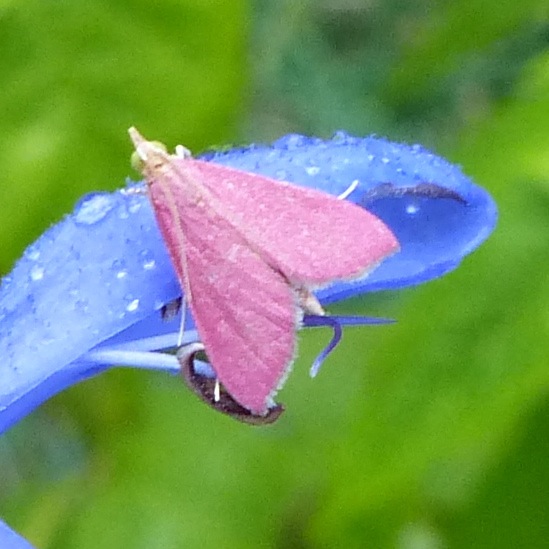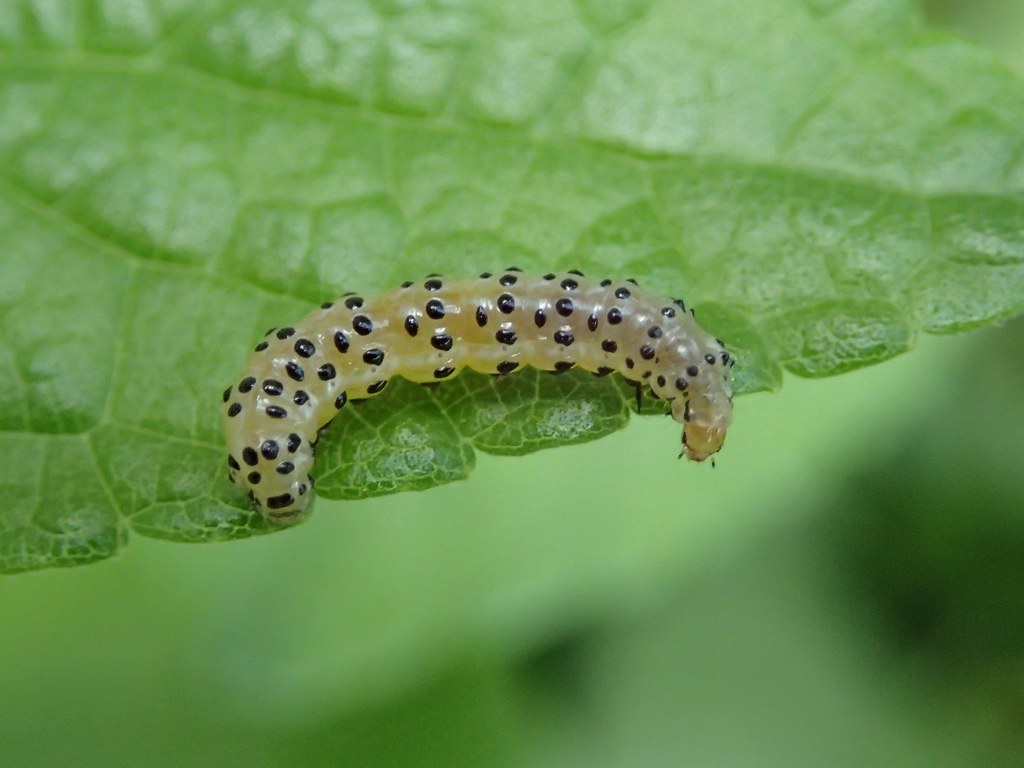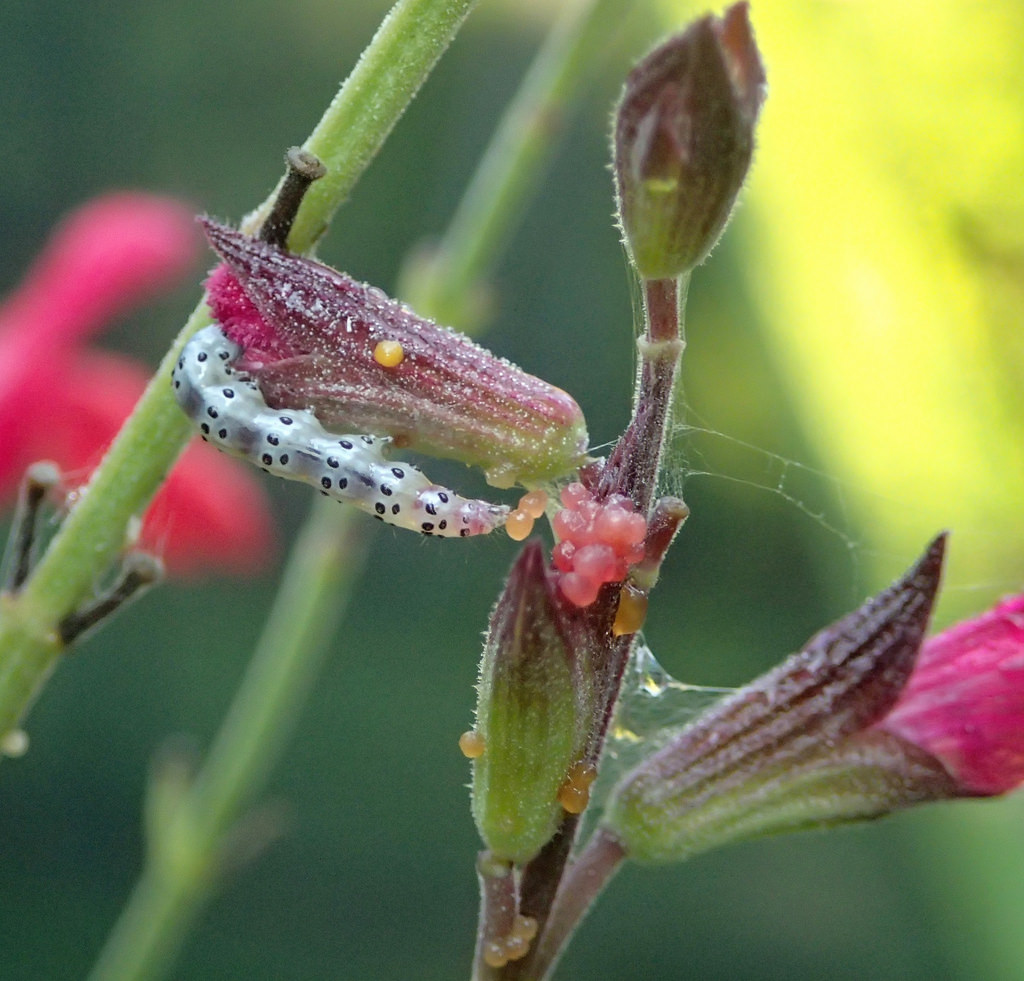Map Snapshot









26 Records
Status
BugGuide summarizes its range as Florida to Kansas and California. Beth Johnson's record from September 2015 slightly extends the species documented northeastern range in BugGuide and our primary moth distribution data sources.
Relationships
Larval hosts are various Salvia species.
Seasonality Snapshot
Source: Wikipedia
| Pyrausta inornatalis | |
|---|---|

| |
| Scientific classification | |
| Domain: | Eukaryota |
| Kingdom: | Animalia |
| Phylum: | Arthropoda |
| Class: | Insecta |
| Order: | Lepidoptera |
| Family: | Crambidae |
| Genus: | Pyrausta |
| Species: | P. inornatalis
|
| Binomial name | |
| Pyrausta inornatalis (Fernald, 1885)
| |
| Synonyms | |
| |
Pyrausta inornatalis, the inornate pyrausta moth, is a moth in the family Crambidae. It was described by Charles H. Fernald in 1885.[1] It is found in United States, where it has been recorded from Arizona, California, Florida, Arkansas, Kansas, Louisiana, Missouri, Oklahoma, Tennessee and Texas.[2] It is also found in Mexico.[3] It has also been recorded as being in Alabama, Illinois, Oregon, Georgia, Kentucky, Mississippi, North Carolina, South Carolina, Virginia, and West Virginia.[4][5]
The species was observed in south-west France at several locations in 2024.[6]
Description
[edit]
The wingspan of the imago is about 13-16 mm. The forewings are uniform reddish pink with no eye-spots or any other notable markings. The hindwings are pale brownish gray, but paler at the base and with a reddish pink along the outer margin.[7] The abdomen of the moth is similar in color to the hindwings, with the thorax also having some of the reddish pink that is present on the forewings. The head of the moth hosts some brown antennae and mouth parts. The eyes are a yellowish green color and large. Adults have been recorded on wing from March to November.[4][8]

Larvae
[edit]Larvae which are fully grown are known to be a translucent light green in color with rows of spots that appear either black or black with white centers. The head of this larva is brown and has five stemmata. These fully grown larvae are typically up to 11 mm.[9]
The color of the larvae can depend on the color of the host plant that the larvae consume, typically ranging from a bluish green to a pale red color.[4]
Pupae
[edit]The cocoon of this moth measures about 8 mm and is slim. The entire specimen will be a pale yellowish white color. The head has a pair of setae, with each consecutive segment also having a pair of setae, with an exception of the mesonotum and metanotum each having four pairs of setae. The antennae appear long and converge down the body posteriorly, though are shorter than the forewings.[10]
Host plants
[edit]The larvae of this moth feed primarily on Salvia species, including Salvia farinacea.[11] They mainly feed on the flowers and buds of salvia species by boring into the unopened flowers near the base. Basil is a suspected possible alternative host plant for the larvae as well.[12][13]
References
[edit]- ^ Nuss, M.; et al. (2003–2017). "GlobZ search". Global Information System on Pyraloidea. Retrieved February 20, 2018.
- ^ "801516.00 – 5037 – Pyrausta inornatalis – Inornate Pyrausta Moth – (Fernald, 1885)". North American Moth Photographers Group. Mississippi State University. Retrieved February 20, 2018.
- ^ Savela, Markku. "Pyrausta inornatalis (Fernald, 1885)". Lepidoptera and Some Other Life Forms. Retrieved February 20, 2018.
- ^ a b c "Pest Alert: Southern pink moth Pyrausta inorntalis" (PDF). January 2021.
- ^ "Inornate Pyrausta Moth (Pyrausta inornatalis)". Insect Identification. August 14, 2023. Retrieved March 2, 2024.
- ^ "Pyrausta inornatalis, new species to France / Europe". InsectNet. 5 September 2024.
- ^ https://archive.org/details/canadianentomolo17ento/page/57/mode/1up?view=theater
 This article incorporates text from this source, which is in the public domain.
This article incorporates text from this source, which is in the public domain.
- ^ Natter, Jean R. (September 1, 2020). "Southern Pink Moth, Pyrausta inornatalis". Southern Pink Moth, Pyrausta inornatalis.
- ^ Osada, Yohei (December 2022). "Description of immature stages of the southern pink moth, Pyrausta inornatalis (Fernald, 1885) (Lepidoptera: Crambidae)". Journal of Asia-Pacific Biodiversity. 15 (4): 568–573. doi:10.1016/j.japb.2022.05.003. ISSN 2287-884X.
- ^ Osada, Yohei (December 2022). "Description of immature stages of the southern pink moth, Pyrausta inornatalis (Fernald, 1885) (Lepidoptera: Crambidae)". Journal of Asia-Pacific Biodiversity. 15 (4): 568–573. doi:10.1016/j.japb.2022.05.003. ISSN 2287-884X.
- ^ Elliott, Lynette (November 12, 2013). "Species Pyrausta inornatalis - Inornate Pyrausta Moth - Hodges#5037". BugGuide.Net. Retrieved March 20, 2018.
- ^ "Pest Alert: Southern pink moth Pyrausta inorntalis" (PDF). January 2021.
- ^ Natter, Jean R. (September 1, 2020). "Southern Pink Moth, Pyrausta inornatalis". Southern Pink Moth, Pyrausta inornatalis.
